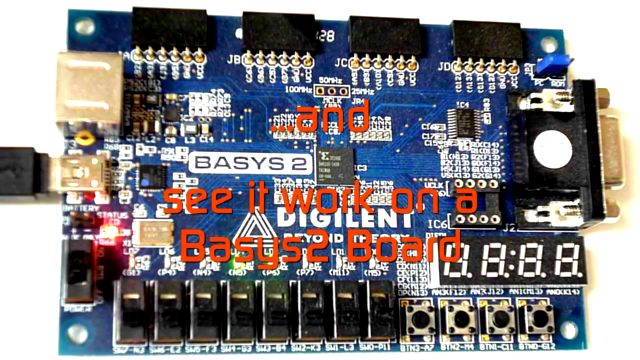Learn VHDL, ISE and FPGA by Designing a basic Home Alarm

Why take this course?
🌟 Course Title: Learn VHDL, ISE, and FPGA by Designing a Basic Home Alarm 🏠✨
Course Headline: Master VHDL with ISE Tools on FPGA - Design and Implement a Home Alarm System on Basys2 Board in Just 6 Hours!
Introduction: Welcome to an enlightening journey into the world of FPGA (Field Programmable Gate Array) Design using VHDL. This course is meticulously crafted to transform you from a beginner to an intermediate user who can confidently design, implement, and test designs on FPGAs within a mere 6 hours!
What You'll Learn:
- Understanding Fundamentals: Gain a solid grasp of essential digital electronics concepts such as Flip Flops, Gates, and Finite State Machines. A bit of programming knowledge will also be beneficial throughout the course.
- FPGA Basics: Learn how FPGAs function, explore the resources available, and familiarize yourself with the FPGA Editor.
- ISE Design Flow: Dive into a comprehensive overview of the ISE design flow, including downloading, installing, and effectively using the tool.
- VHDL Syntax & Logic Implementation: Master VHDL syntax and understand how your code translates into logic on the FPGA.
- Complete Design Process: From concept to implementation, you'll learn every step of designing a Home Alarm System, including writing state diagrams, synthesizing VHDL code, adding constraints, running simulations, and finally configuring your design onto a Basys2 board.
Course Structure:
- FPGA Basics & Resources: Get acquainted with the FPGA's architecture and the tools at your disposal.
- ISE Flow Overview: Learn the ins and outs of the ISE design flow with practical demos.
- VHDL Syntax & Technology Schematic: Write VHDL like a pro and see how your code is converted into logic.
- Designing a Home Alarm System: Follow a step-by-step approach to design, simulate, and implement a real-world application - a Home Alarm System.
- Conceptualizing the Design
- Writing VHDL Code
- Synthesis and Constraints
- Implementation & Timing Analysis
- Behavioral Simulation
- Post-Implementation Simulation
- Configuration onto Basys2 Board
Course Format: This course is designed to be engaging and informative, featuring a total of 6 hours of video content spread across 50 lectures. Each lecture is packed with demonstrations that will guide you through the effective use of ISE tools for VHDL design on FPGAs.
Who This Course Is For:
- Aspiring FPGA designers who wish to learn VHDL and apply it in real-world applications.
- Electrical and Computer Engineering students looking for practical experience with digital designs.
- Professionals working with embedded systems or digital electronics who want to expand their skillset.
Instructor: M Ajmir Goolam Hossen, a seasoned course instructor with extensive experience in FPGA design and VHDL programming. His expertise will be your guide as you navigate through the complexities of FPGA design.
Embark on this journey today and unlock the potential of FPGAs with VHDL! 🚀🛠️🎉
Course Gallery




Loading charts...